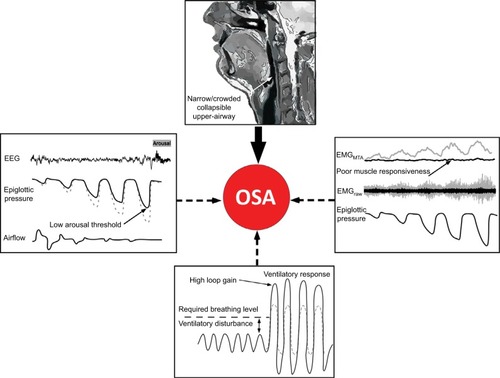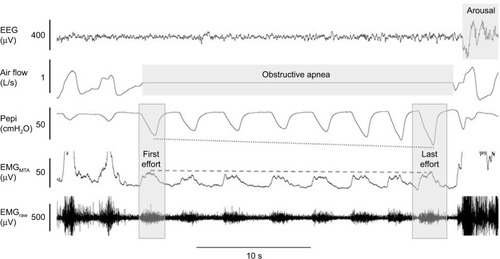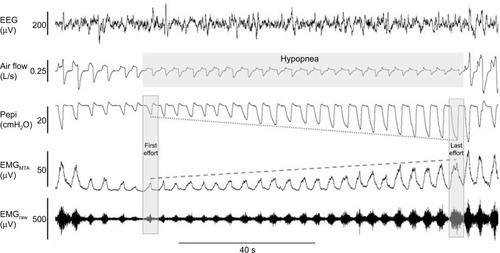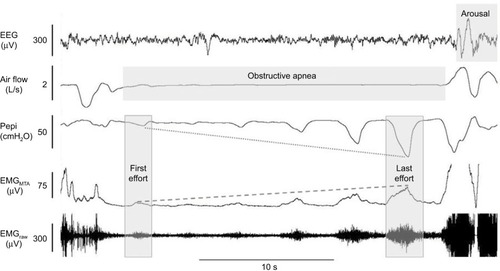Figures & data
Figure 1 Schematic of the anatomical and non-anatomical causes of OSA.
Abbreviations: EEG, electroencephalography; EMG, genioglossus electromyography; MTA, 100 ms moving time average of the rectified raw EMG signal; OSA, obstructive sleep apnea.

Figure 2 Example of minimal genioglossus muscle responsiveness.
Abbreviations: EEG, electroencephalography; EMG, genioglossus electromyography; MTA, 100 ms moving time average of the rectified raw EMG signal.

Figure 3 Example of robust genioglossus muscle responsiveness and restoration of airflow without cortical arousal.
Abbreviations: EEG, electroencephalogram; EMG, genioglossus electromyography; MTA, 100 ms moving time average of the rectified raw EMG signal.

Figure 4 Example of robust genioglossus muscle responsiveness without restoration of airflow.
Abbreviations: EEG, electroencephalogram; EMG, genioglossus electromyography; MTA, 100 ms moving time average of the rectified raw EMG signal.

